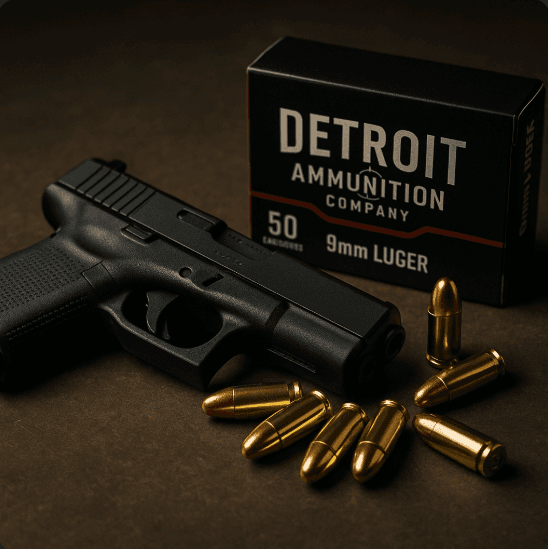Early Season vs Late Season Dove Loads: What Actually Changes?
Posted Jun 13, 2025
 Dove hunting may look the same throughout the season, but subtle yet meaningful tweaks in load selection can make all the difference when it comes to bringing home a full bag of birds.
Dove hunting may look the same throughout the season, but subtle yet meaningful tweaks in load selection can make all the difference when it comes to bringing home a full bag of birds.
Everything matters when it comes to your choice of load, including shot size and payload, down to your choke adjustment and velocity.
Thanks to this harsh truth, we decided it would be helpful to walk you through the best possible changes you can implement throughout the season, and hopefully help you decide if and when to switch loads.
Why the Season Impacts Your Load Selection
Bird behavior evolves over time and throughout the season.
Early in the season, doves are leaner, faster fliers, typically schooling in larger flocks. As the season moves on, cooler weather brings thicker plumage, slower populations, and often gusty wind patterns.
These shifts all impact the effectiveness of the shot spread, penetration, and range.
Environmental factors also play their part. Fields can go from lush and dense to barer and breezier, and more wind can blow pellets off-course, with visibility decreasing as foliage falls.
This isn’t just some crazy theory, but is rather a truth of nature that directly influences your load strategy, and with the advancements in sheel technology we’ve seen over the past decade, there is a perfect shot for every scenario.
Shot Size: Lighter Early, Heavier Late
Starting off, your shot size should adapt as the season rolls on.
Early Season: #8 and #9 for Speed and Spread
- Ideal for close-range shooting (15–30 yards) where a light shot delivers more pellets on target.
- Higher pellet count creates a denser pattern with enough punch for a smaller dove.
- Recommended for open-choke setups: Improved Cylinder or Skeet.
Late Season: #7 or #7½ for Penetration and Reach
- Mid-to-late season shots are tougher, and shots move out to 30–40+ yards.
- Slightly heavier pellets resist wind drift and penetrate better.
- Tighter patterns with modified or improved chokes increase your chances of taking down a bird..
Payload and Velocity: When More Matters
When it comes to size and force, the time of season does make a difference in your choice of shotgun shell.
Early Season: Light & Fast
Light loads (⅞ oz to 1 oz) at roughly 1,200–1,300 fps keep recoil pretty manageable and allow high-volume shooting, perfect for full days in fields or wingshooting trips.
Late Season: Heavier & Hard-Hitting
Heavier payloads (1 oz+) with 1,350–1,450+ fps deliver the deeper penetration that's needed for thicker-feathered birds. This extra oomph can be critical for reliably killing at longer distances, though recoil is more noticeable.
Patterning and Choke Adjustments
The same goes for chokes and patterns:
Early Season: Wide Patterns with Open Chokes
Dense flocks at closer ranges are easy to shoot with open chokes like improved cylinders or skeet. With lighter loads and smaller shot, wider spreads promise you hits on mid-flight birds without over-penetrating.
Late Season: Tightening Up with Distance
Birds tend to spread out more late season. Again, modified or improved chokes help tighten patterns, allowing consistent kills at longer ranges and helping compensate for heavier shot and increased recoil.
Regional and Environmental Differences
Various terrains, such as open farmland, brushy fields, or water-edge habitats, demand different gauge, load, and choke setups.
Similarly, wind or temperature patterns can vary greatly based on the region.
One great example of this is Argentina dove hunts, typically involving thousands of rounds per day and heavy shooting pressure.
A lot of times, sportsmen dove hunting in Argentina will go with a reliable middle-ground load for its consistency and cost-effectiveness, often a #7½ steel load that has a good balance of range and recoil.
On the other side of the coin, in US states like Georgia and Texas, dove hunters often tailor their loads to conditions, with #8 lead being popular for early-season close shots, or #6 for longer late-season birds. Unlike Argentina’s volume-driven hunts, stateside shooting focuses more on precision.
Should You Change Loads Mid-Season?
Ask yourself:
- Is shot range changing? Switch if you’re regularly pushing out beyond 30 yards.
- Have birds gotten heavier? Thicker plumage and slower flight paths might warrant heavier shot.
- Are winds shifting? Bolder patterning helps counter drift.
If you’re persisting with 15–25 yard shots in open fields, your early-season load may still deliver full effectiveness late into the season. The key is patterning your gun when you do decide to switch, as it’s the only way to truly optimize performance.
Detroit Ammo Co. Recommendations
At Detroit Ammo Co., we’ve tested and stocked loads that deliver consistent performance throughout every season.
Here’s what we recommend based on real-world dove hunting performance:
Early Season Loads (Close Range, Light Birds, High Volume)
Ideal Load:
- Shot size: #8 or #9
- Payload: ⅞ oz to 1 1⁄8 oz
- Velocity: 1,200–1,300 fps
- Gauge: 12 or 20 preferred for versatility
Top Picks:
A great all-around upland shell for the early season. It offers manageable recoil with solid spread. The lead #8 shot produces excellent pattern density at 20–30 yards, ideal for opening day flocks.
- Fiocchi Dove & Quail 20 ga, ⅞ oz, #8 Shot, 1,210 fps
This is a great option if you’re running a sub-gauge setup. The lighter payload and consistent spread make it ideal for fast-paced early hunts with quick follow-up shots.
- Winchester AA Light Target 12 ga, #9 Shot
If you’re hunting tight quarters or focusing on volume shooting, #9 shot offers maximum pellet count. Pair it with an Improved Cylinder choke for short-range snap shooting on crossing birds.
Late Season Loads (Longer Shots, Wind, Feathered Birds)
Ideal Load:
- Shot size: #7½ or #7
- Payload: 1 oz to 1¼ oz
- Velocity: 1,300–1,450 fps
- Gauge: 12 or 20, depending on distance and barrel length
Top Picks:
This non-toxic load offers a perfect mid-weight option for late-season dove. The tighter pattern and heavier shot size help with penetration on birds flying farther or in rougher weather.
- Winchester Super-X 12 ga, 1¼ oz, #7½ Shot, 1,330 fps
Designed for upland birds, this heavy-hitting shell gives you more power and a dense pattern at 35+ yards. Great for high-wind days and sparse late-season flights.
- Federal Speed-Shok 12 ga, 1 oz, #6 Shot, 1,450 fps
While technically a waterfowl load, this is ideal if you’re dealing with strong wind or shooting in open terrain. The larger pellet size and extra velocity help maximize your chances on educated birds flying high.
Final Thoughts
The difference between early and late season dove loads boils down to four key tweaks:
- Shot Size: #8/#9 early, #7/#7½ late.
- Payload/Velocity: Lighter and faster early, heavier and harder late.
- Choke: Open early, tighten for late-season reach.
- Pattern Testing: Confirm spread after any ammo switch.
These adjustments are grounded in dove biology, field conditions, and hundreds of thousands of shots in North and South America.
Ready to dial in your load this season? Check out our Federal Hi‑Bird #8, Federal Upland Steel #7½, and Federal Steel #6, each featured above and stocked now at Detroit Ammo Co.


